BuildingConnected is a major player in the bidding world, offering a platform that handles bid invites, packages, and subcontractor proposals all in one place. With over 700,000 users, it’s clearly a popular pick, but a big user count doesn’t always equate to big value. For most general contractors, the real concern is whether the features justify the cost.
This blog breaks down BuildingConnected's pricing to see if it delivers the value it promises. We’ll also take a look at whether there’s a smarter, more cost-effective solution that might suit your needs better.
Note: Downtobid puts you back in control of the preconstruction process. Our platform uses AI to automate scope reviews, create intuitive planrooms, generate project-specific sublists, and send personalized emails that boost subcontractor engagement. Sign up for a free demo today.
Key Takeaways
- BuildingConnected costs $3,600+ annually with opaque pricing requiring sales demos from stagnant platform.
- Offers bid management and subcontractor network but has outdated data and spam folder issues.
- Downtobid provides transparent pricing with Free/Starter/Pro plans plus AI scope identification and verified networks.
- BuildingConnected requires account creation; Downtobid offers hassle-free access with organized folders and personalized ITBs.
- Downtobid achieves 30% higher responses with some users reaching 60%+ responses and 80+ bids.
What is Building Connected?
Building Connected is a unified platform designed to connect construction professionals—from general contractors to subcontractors and project owners.
How Much Is Building Connected?
Unfortunately, pricing isn’t exactly front and center with BuildingConnected. You won’t find a simple rate sheet online. To find out how much you'll be paying, you're required to start with a demo and then get a quote tailored from the sales team.
From estimated figures, pricing can start at $3,600 per year, but that’s only a rough benchmark from verified user reviews. The exact cost depends on factors like the number of users and offices in your company, with subscription terms often spanning three years, though one or two-year agreements are available.
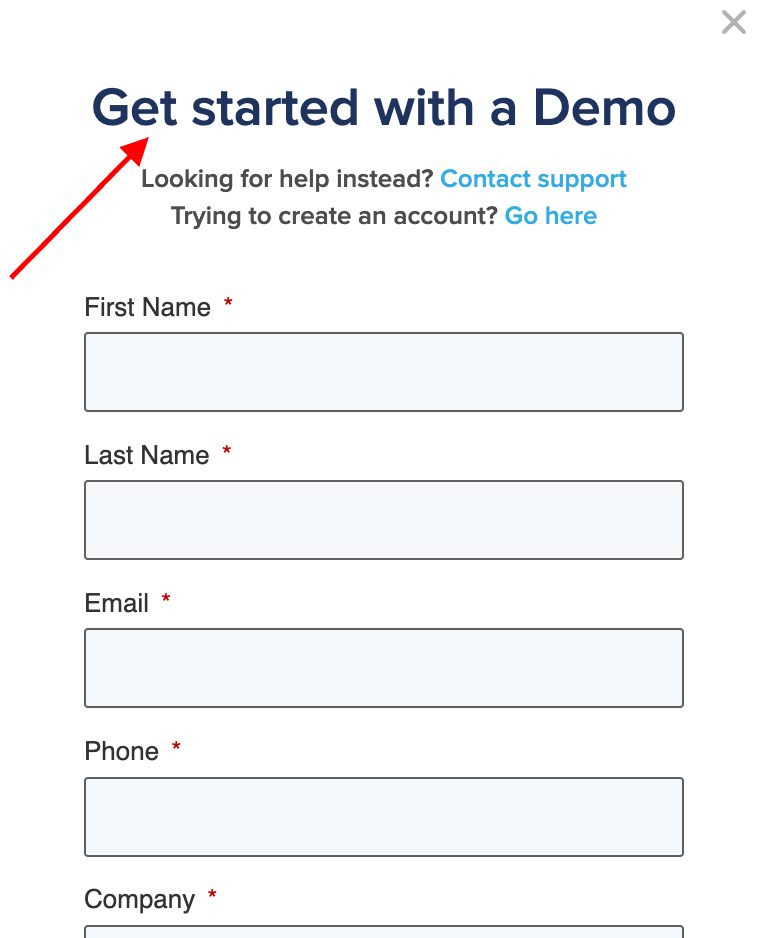
Time is already stretched thin as a GC, and dealing with a complex sales process just to get basic pricing details feels like an unnecessary hurdle. Then there's the risk of sticker shock. What if you budget based on the demo, only to find the final cost is much higher? And what about hidden fees? Adding users midway through the contract or facing price hikes as your business grows could blow your budget.
Adding to these concerns, users report that BuildingConnected has seen little meaningful development since Autodesk's acquisition in 2018. The platform feels stagnant, with few new features or improvements rolled out despite steadily increasing prices. And with the merger, there's a real chance you could be pushed into a broader, pricier ecosystem, and you may no longer be able to purchase BuildingConnected independently. After it is all said and done, you may wonder, is Building Connected worth it?
Don't worry because we have a platform that cuts through the clutter. One that lays it all out clearly so you can compare your options without the runaround. Downtobid fills this gap perfectly. It’s an online bid management platform designed to streamline the entire process, from breaking down construction plans to connecting with the right subcontractors.
2025 Update: Building Connected's Pricing Backlash Gets Worse
The pricing concerns we highlighted earlier have only intensified in 2025. Recent user feedback reveals BuildingConnected has implemented a "new subscription costs structure" that's pushing longtime customers to their breaking point.
One subcontractor reported costs have "increased more than double" – a price hike so steep they simply told BuildingConnected "no" and started looking elsewhere.
The frustration runs deeper than just sticker shock. Users are paying six-figure annual fees (one GC mentioned $22,000 per year for the BuildingConnected/ProEst bundle) for a platform that feels increasingly stagnant. As one user put it: "Autodesk acquired it and is doing what they do best, not develop squat. I give it 2 more years and we will be moving on."
Why This Matters for Your Bottom Line
Building Connected's pricing strategy reveals a troubling trend: they're banking on user dependency rather than innovation. When a platform doubles its prices while admittedly stagnating on development, that's not a partnership – that's exploitation.
This pricing squeeze has created a perfect storm. Construction professionals who once grudgingly accepted Building Connected's nontransparent pricing model are now actively seeking alternatives.
The real question isn't whether Building Connected works (it does), but whether you want to be locked into an ecosystem that prioritizes profit extraction over platform improvement. With alternatives like Downtobid offering transparent pricing and continuous AI-driven innovation, the choice becomes clear.
Downtobid Delivers More Value at a Lower Cost
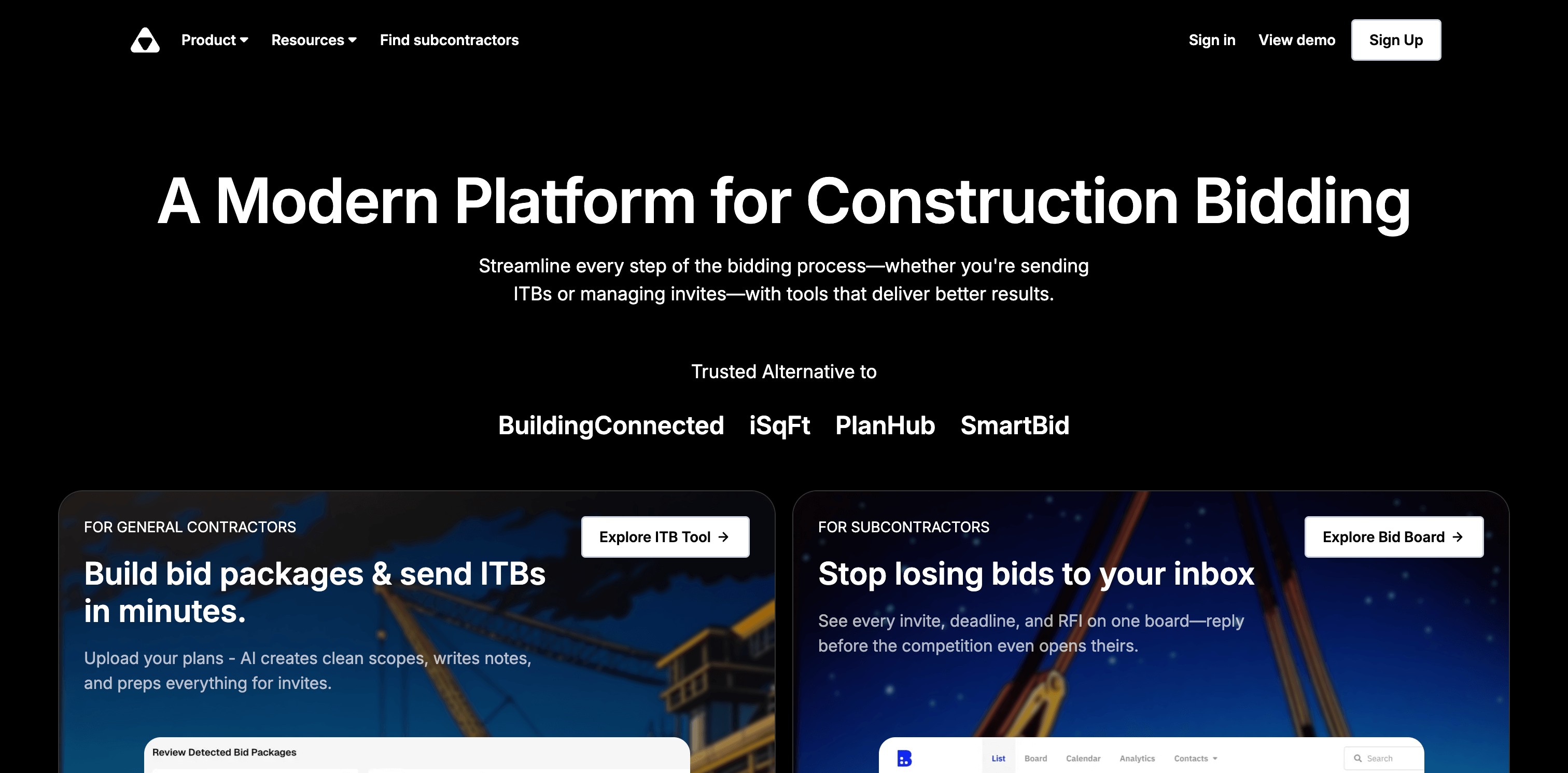
If you’re looking to test the waters, Downtobid’s Free Plan offers a perfect starting point. It gives you access to a hands-on demo without any cost or commitment, making it easy to see if the software fits your needs. When you're ready to upgrade, you get two solid plans to choose from.
Starter Plan
The starter plan is ideal for teams that are growing but don’t need anything too complex yet.You can manage unlimited active projects and have up to three users onboard. It also includes a dedicated bid coordinator to help streamline your process without the added overhead.
Pro Plan
As teams expand and tackle more complex projects, the pro plan offers enhanced capabilities. This plan extends support to up to 10 users and includes all Starter Plan features. It also includes sublist cleanup and migration services, along with access to Downtobid’s expansive subcontractor database, which saves you hours of manual work.
With a free demo, you can explore the platform firsthand and decide if it’s the right solution for you, all with minimal risk.
What Do You Get with Building Connected?
BuildingConnected offers three main tools:
- BuildingConnected Pro: This comprehensive bid management platform provides features like unlimited projects, bid invitations, custom bid forms, document control, bid leveling, and analytics. It allows you keep track of bid invites, projects, and due dates across your entire office — from one place. You'll also get access to Building Connected's Subcontractor Network.
- Bid Board Pro: Designed for subcontractors, this tool helps manage bids and save time, offering features like automated bid tracking, bid forwarding, and analytics. Read our comparison of Bid Board Pro vs Downtobid.
- TradeTapp: Focused on subcontractor qualification, TradeTapp provides tools for managing financial and safety risk assessments.
If you want a detailed breakdown of how Building Connected stacks up against other platforms like Smartbid or Downtobid, check out our comparison post. It covers the pros, cons, and key differences to help you make an informed choice.
Subcontractor Network
Building Connected boasts the largest crowd-sourced network with over a million subcontractors. Whether you’re in a new area or need subs in an unfamiliar trade, you have plenty of options and can use search filters to refine your choices and find qualified subcontractors. But the size of a network is only as good as the accuracy of its data, and that’s where Building Connected starts to slip.
Subcontractors are responsible for keeping their details updated, but with the hectic nature of the job, most don’t have time for that. That means you’re likely to run into outdated info, with no ideal way to fix it. You can only suggest an edit, but that doesn’t guarantee it will get fixed anytime soon.
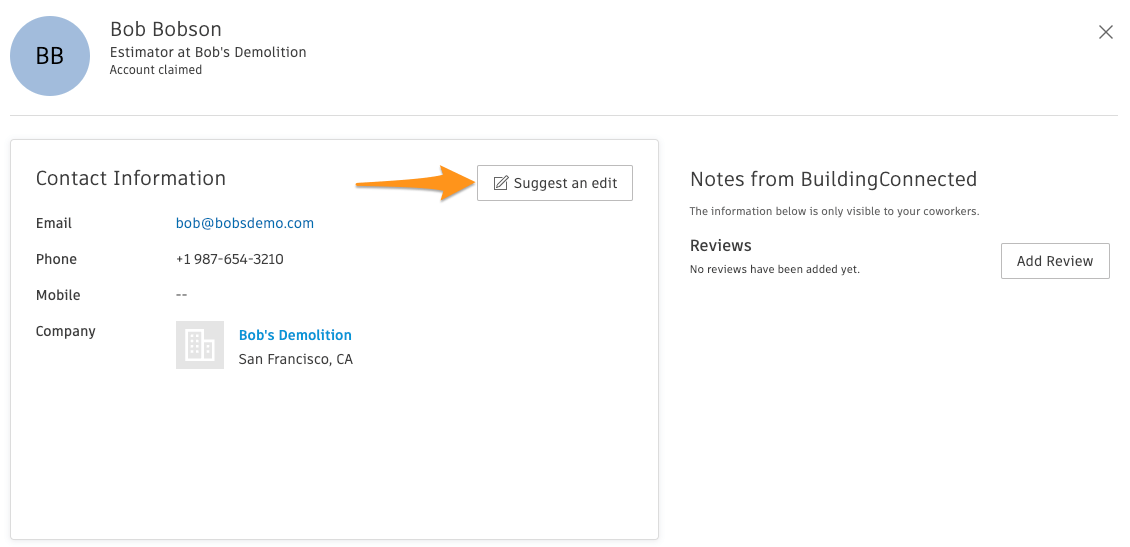
This becomes a bigger headache when you’re trying to invite the right subs for specific trades. Some subs have different estimators for each trade, but BuildingConnected doesn’t make it easy to separate those roles.
GCs end up sending bids to the wrong contacts or getting incomplete bids that cover multiple trades. It creates confusion, and suddenly, you’re stuck manually fixing bid assignments, adding another layer of admin work to your already packed schedule.
Downtobid takes a different approach with our subcontractor network. We run all our data through a multi-step verification process to keep it accurate by:
- Using AI to categorize trades based on what subs list on their websites.
- Analyzing their portfolios to identify the types of commercial construction projects they focus on.
- Sending an email to confirm we have the right contact and that the company’s still active.
- Cross-checking sources (Google Maps, local trade associations, and more) to ensure we have the right local subs.
- Updating information every time we hear back for future use.
To explore our approach in more detail, check out the full explanation here.
Also, here's an example sublist directory for a closer look at our subcontractor network:
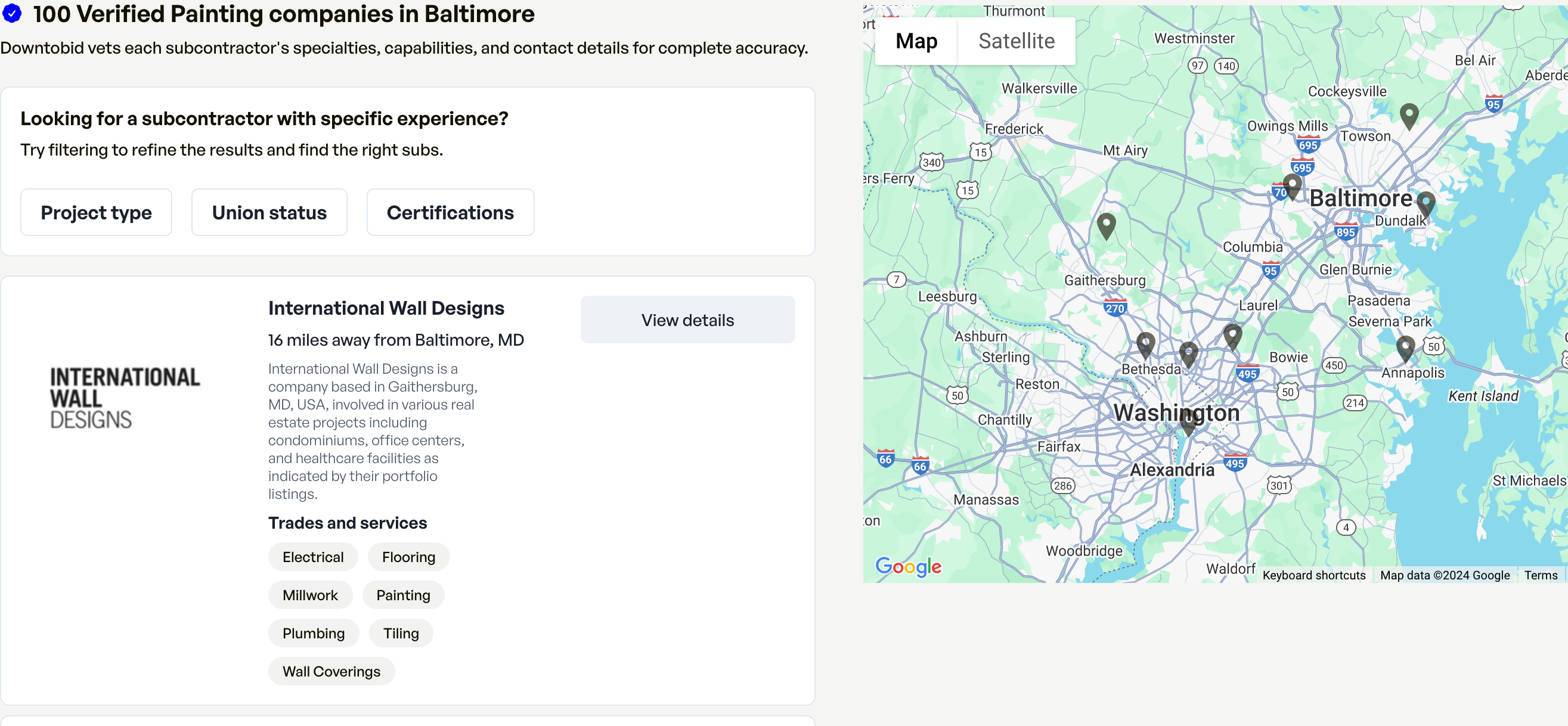
And here’s an example profile:

General Contractor — Subcontractor Communication
One of BuildingConnected's key promises is improved communication between GCs and subcontractors. Ideally, the platform simplifies the process of sending bid invites and project documents, making sure the right subs receive notifications and can easily access project details. But, in practice, this often doesn’t hold up.
Many GCs report that subcontractors don’t receive notifications at all. Emails sent via BuildingConnected frequently end up in spam folders, or go entirely unnoticed by subs. This forces GCs to revert to old-fashioned methods — making phone calls or sending direct emails — just to confirm that subs are aware of the project and have the necessary documents. Not only does this waste time, but it also defeats the purpose of having a centralized bidding platform in the first place.
A more effective solution lies in two simple approaches:
- Providing easy access to project documents through an organized planroom.
- Sending personalized ITBs that don’t get lost in the clutter.
- Downtobid delivers on both, here's how.
User-Friendly Planrooms for Easy Management
Subcontractors on BuildingConnected have to create an account to access plans, a frustrating extra step that often leads to disengagement and missed bids.
And this creates a ripple effect for GCs. The pool of competitive bids shrinks, and you have to work harder to get subs on board, hurting bid coverage in the process.
In contrast, our planroom is designed for easy access, with no account required. Subcontractors can easily view documents hassle-free, encouraging broader participation and keeping them more engaged.
To make things even simpler, we auto-organize the Planroom into four clear folders:
- Plans
- Specs
- Photos
- Miscellaneous
These categories mirror what subs are used to, so they can easily find what they need. Beyond that, we sheet, index, and title every single page, allowing subs to jump straight to the relevant sections and quickly assess if the construction plans match their expertise.
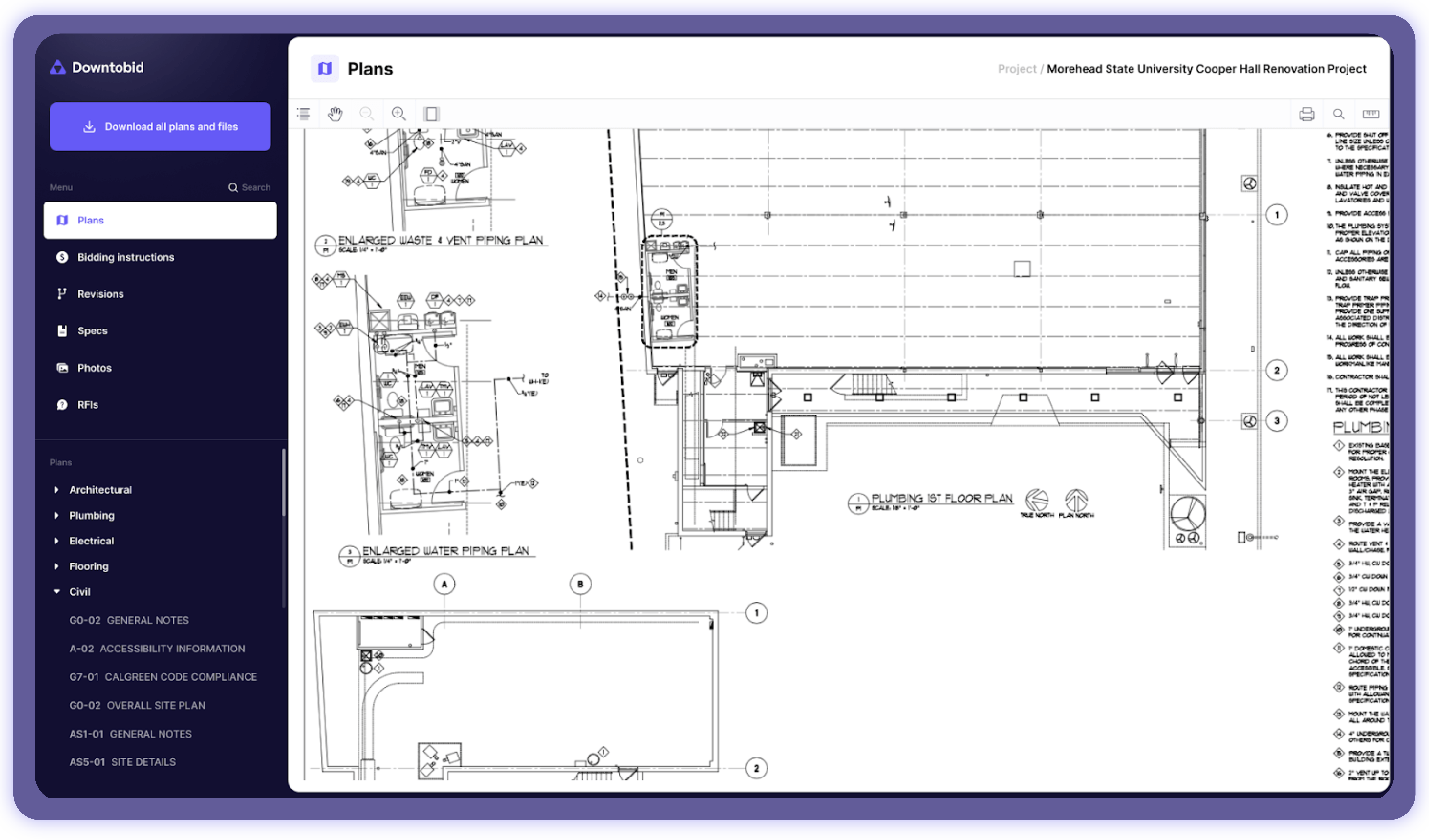
Our AI also tracks subcontractor engagement with the planroom after you send custom bid invites, giving GCs a clear view of who’s interested. This lets contractors fine-tune their outreach strategies based on real-time insights, making it easier to focus on subs who are ready to bid.
Genuine, Personalized Invitations to Bid
One of the biggest frustrations for subcontractors on BuildingConnected is the influx of irrelevant bid invites, cluttering their inboxes with notifications for projects that don’t even align with their trade. This often happens because GCs either reuse outdated invite lists or fail to manage who should be getting invites.
Naturally, when subs are flooded with irrelevant notifications, they tune out, causing GCs to risk having important bids ignored by qualified subs lost in the noise.
Our platform takes a different approach. We generate personalized bid invitations that cut through the clutter by:
- Tailored matches: Each invite clearly explains why a specific subcontractor is a perfect fit, matching their skills and experience with your project’s needs.
- Transparent project details: We provide all the necessary information upfront, including a clear scope of work and correct trade information, so subcontractors can quickly decide if they’re the right fit without having to dig through complex plans.
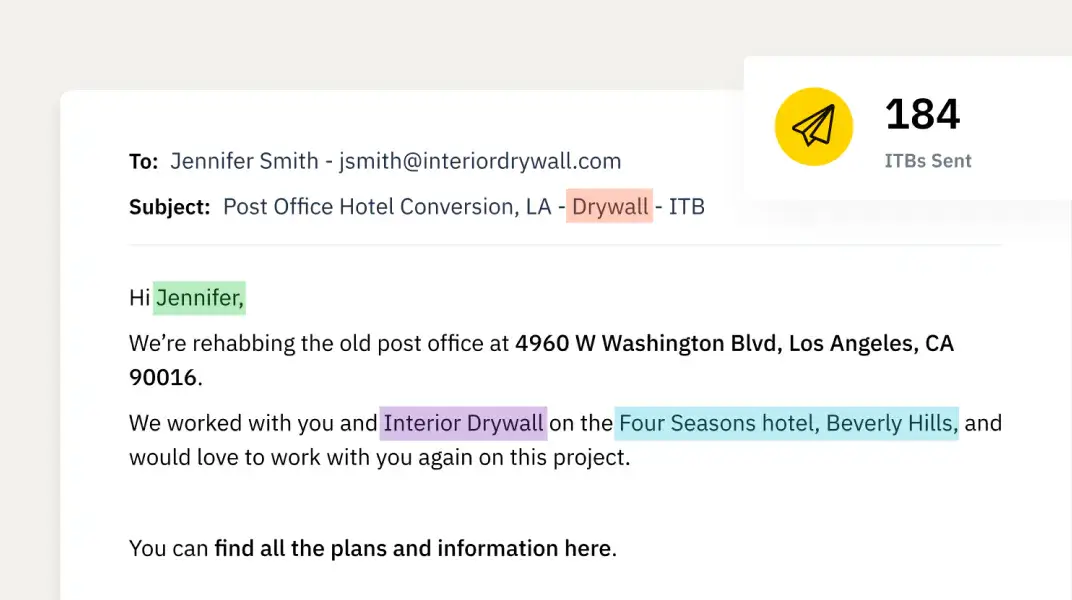
- Compelling subject lines: Each invite stands out by highlighting key details like project size, type, and location, making it more likely to be opened and considered.
- Thoughtful follow-ups: We send 2-3 follow-up messages at the right intervals to keep the opportunity on their radar and show your genuine interest in their participation.
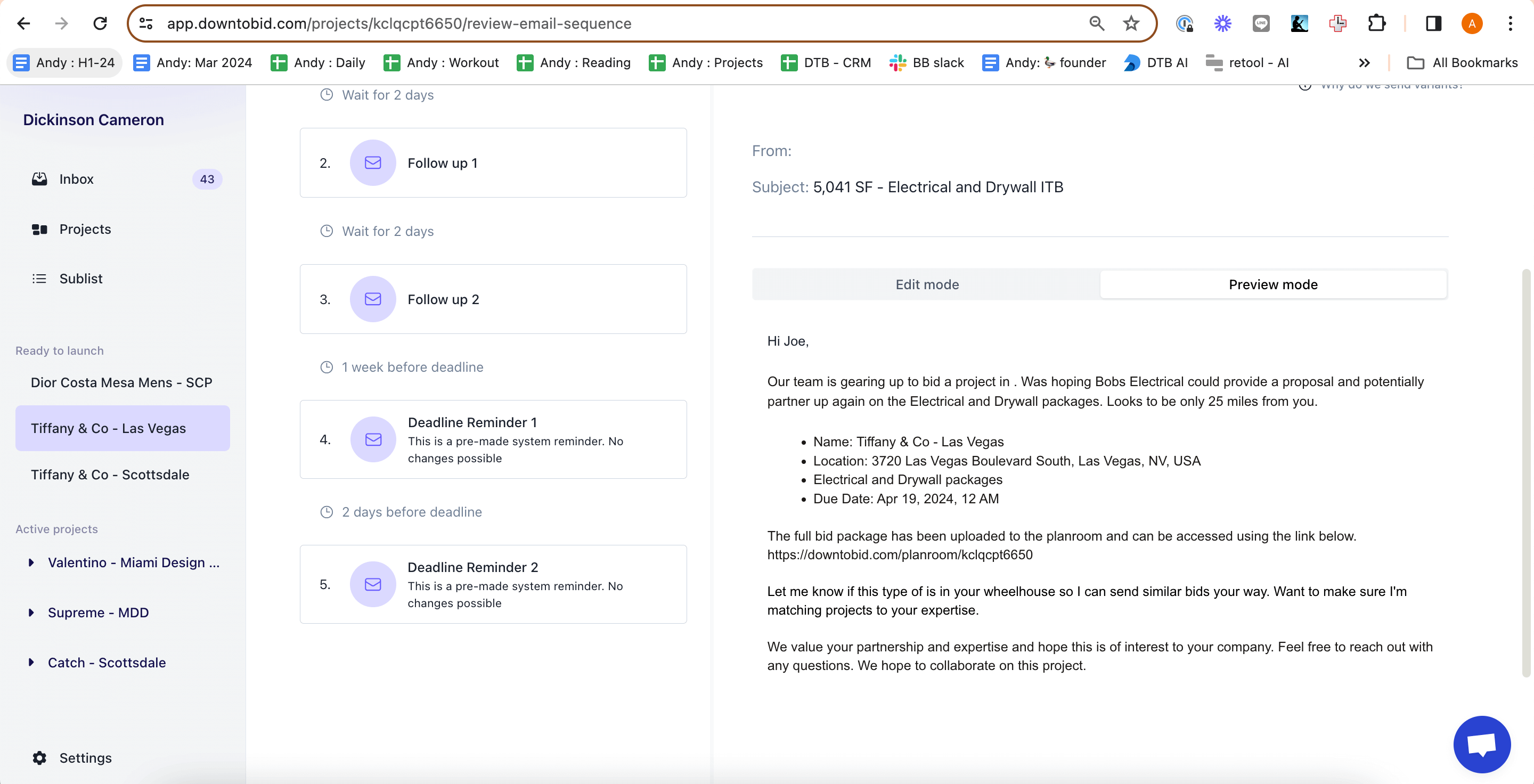
This personalized approach to ITBs has shown impressive results. Users have seen a 30% average increase in responses from targeted subcontractors, with some even hitting over 60% response rates, with more than 80 bids for a single project.
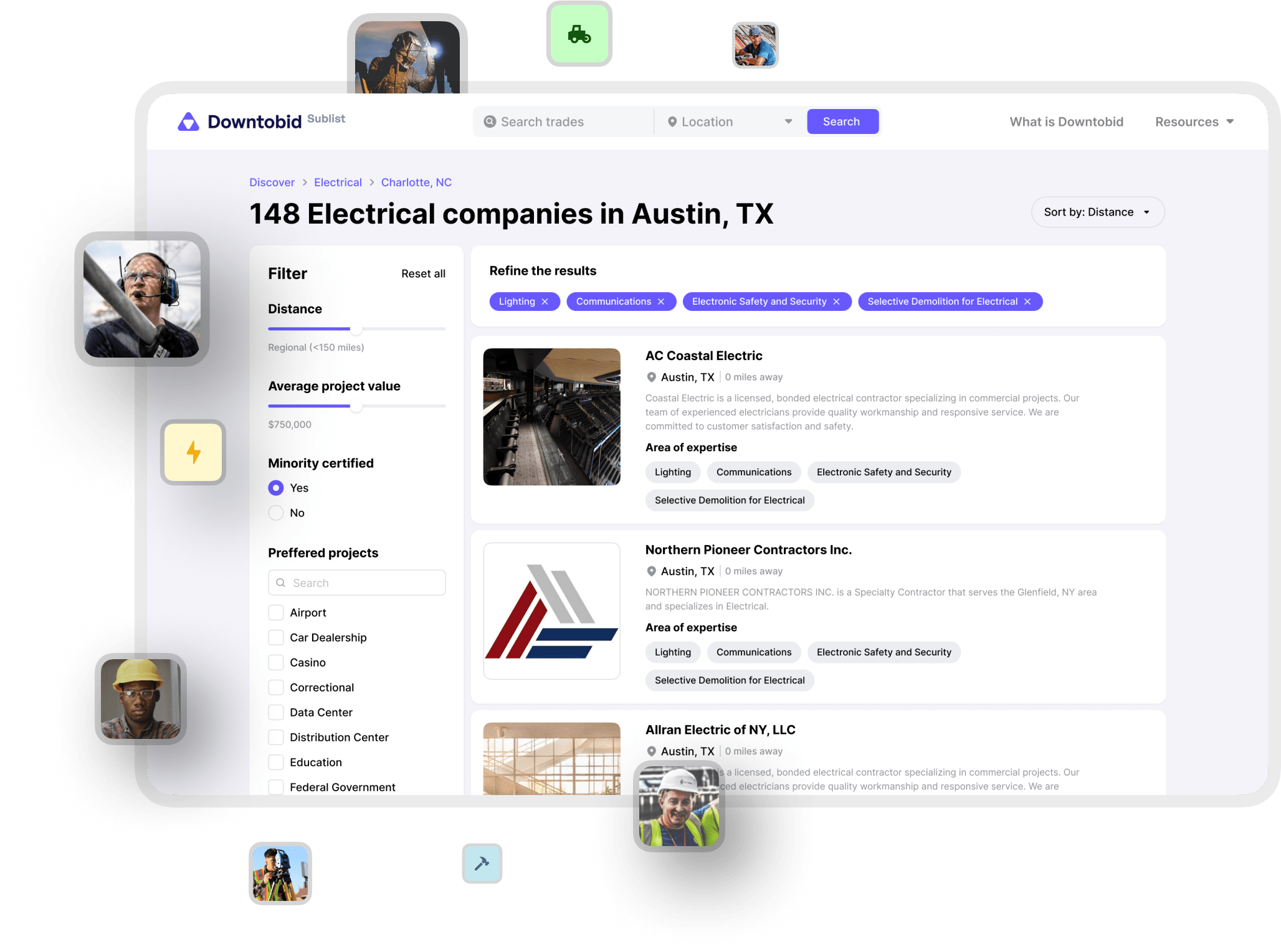
Here are some results from our independent research:
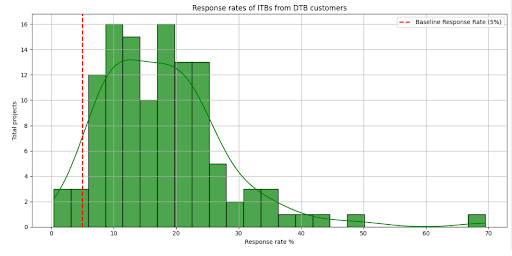
Final Words: Is Building Connected Worth It for GCs?
While BuildingConnected may promise to streamline the bidding process for GCs, its many shortcomings make it hard to recommend as a truly value-adding tool. Subcontractors often feel frustrated by the mandatory sign-up process, spammy invites, and irrelevant notifications, which leads to disengagement or missed bids. On the other side, GCs are left scrambling — manually following up with subs, sifting through incomplete or misaligned bids, and managing subcontractor profiles with limited control.
Construction projects carry high stakes, and you need a tool that lightens your workload, not adds to it. Downtobid makes this happen by using AI to identify scopes within your plans, providing an up-to-date subcontractor network, organizing your planrooms with ease, and sending personalized ITBs that actually reach the right people. And there’s plenty more we haven’t even covered in this guide.
Want to see how it works? Sign up for a demo today — it’s completely free.